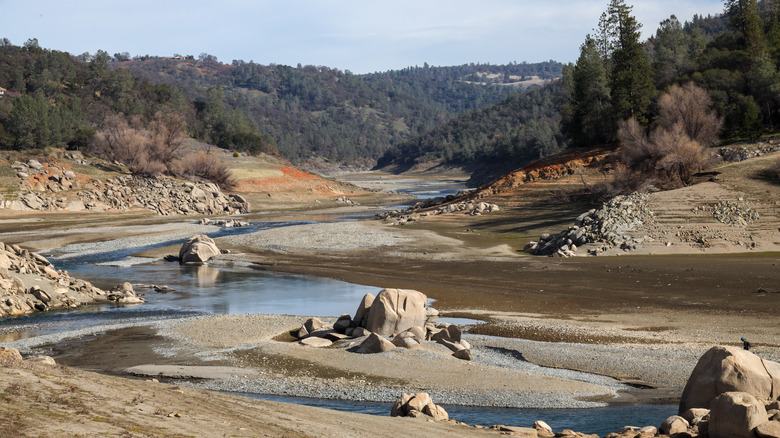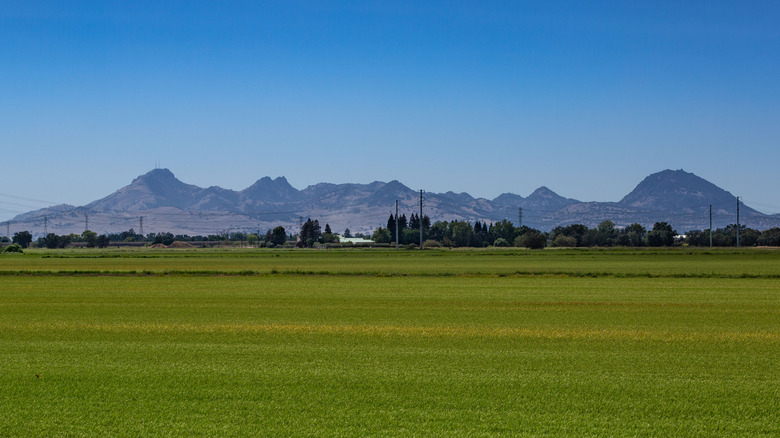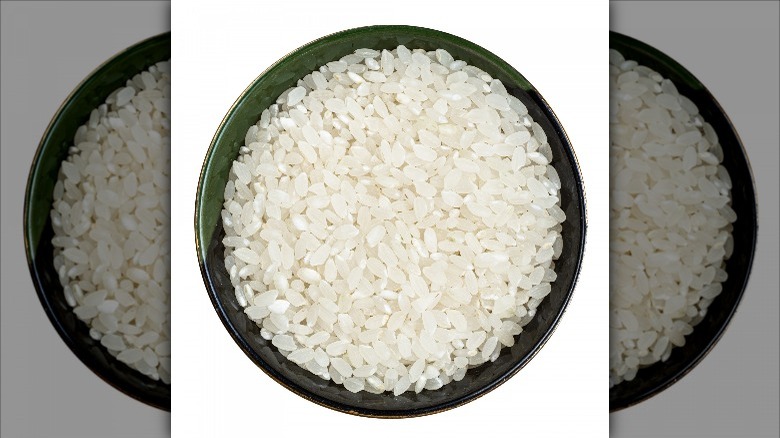How California's Drought Is Impacting Rice Supplies
Rice has been part of California's agricultural landscape for more than a century. Think Rice says because the grain was a dietary staple for the Chinese immigrants that made their way to the United States to work in the gold mines and on the railroads, farmers in the late 1800s discovered they could make money raising and selling particular cash crops. They also discovered California was the perfect place to grow them because it enjoyed the right weather conditions: little rainfall, plenty of sunlight, as well as cooler nighttime temperatures, per the University of California.
As a result and by 1912, California was harvesting commercial quantities of rice, and the state has since become the second-largest state to grow rice in the country, with most of its rice fields located in northern California's Central Valley, per Ag Data News. The amount of rice California grows in an average year makes the grain a big contributor to the state's economy. Ag Data News writes that, in a good year, the region harvests $900 million worth of medium-grain Japonica rice, which is used for Mediterranean dishes like paella and risotto, as well as the all-popular Japanese sushi.
But 2022 is not an average year — it's the latest in a string of dry years and a period not seen for at least 1,200 years per The Mercury News — and California's rice farmers are among those who are now paying the price.
California's drought means there is not enough water to grow rice
It's no secret that California is in severe drought mode — and while the state is no stranger to water shortage, the most recent dry spell only ended in 2017. The Mercury News says it barely gave farms and reservoirs enough time to recover. Per Cal Matters, 64% of wells are at historic lows, and three out of 12 reservoirs are less than 25% full, all as the state has suffered more than 900 days of drought since February 2020.
Under normal circumstances, rice paddies need about 5.1 inches of water for plants within it to grow properly; given that, on average, 550,000 acres of California land is devoted to rice cultivation, the industry needs an estimated 2.8 million acre-feet of water, which translates into 6% of California's water requirement, per The Oregonian. However, in some places, rice farmers were given just 18% of the federal water they needed to grow rice, which meant they couldn't grow any at all, per The Wall Street Journal.
Tim Johnson, chief executive of the California Rice Commission, tells The Wall Street Journal: "Even in a drought, rice farmers have been able to get a fairly high percentage of the water they had rights to. Now they are experiencing drought at a level they've never seen before." One rice farmer describes sections of California's rice capital, Colusa, as "just a wasteland," per San Francisco Chronicle.
Calfornia will see a huge drop in rice output
This year, the San Francisco Chronicle says about 300,000 of the 550,000 California rice acres aren't expected to report any yields. Ag News Daily says Colusa County didn't plant rice in 84% of its lands, while Glenn lost 75% of its rice harvest. Together, the damage to both areas means a revenue loss of half a billion US dollars. Almost half of that loss is meant to be covered by federal crop insurance.
But if the state suffers from a crippling drought, how does it still have a rice harvest to report? San Francisco Chronicle says two Northern California areas still have rice yields: Butte County and Yuba because they draw their water from a different source. This year's grim prognosis spells the end of California's rice industry since it is expected to rebound once the drought ends. As Ag News Daily noted, the amount of rice acreage will probably increase after the drought, but this year's dramatic decline in acreage feels like a sign of hard times for California rice.


